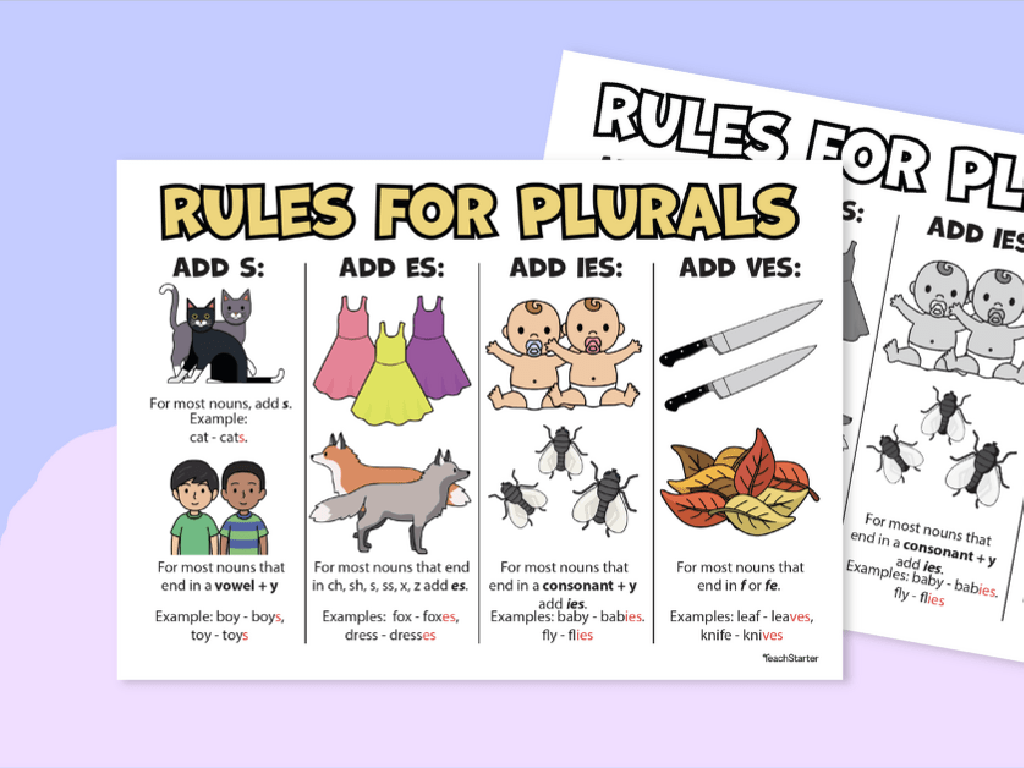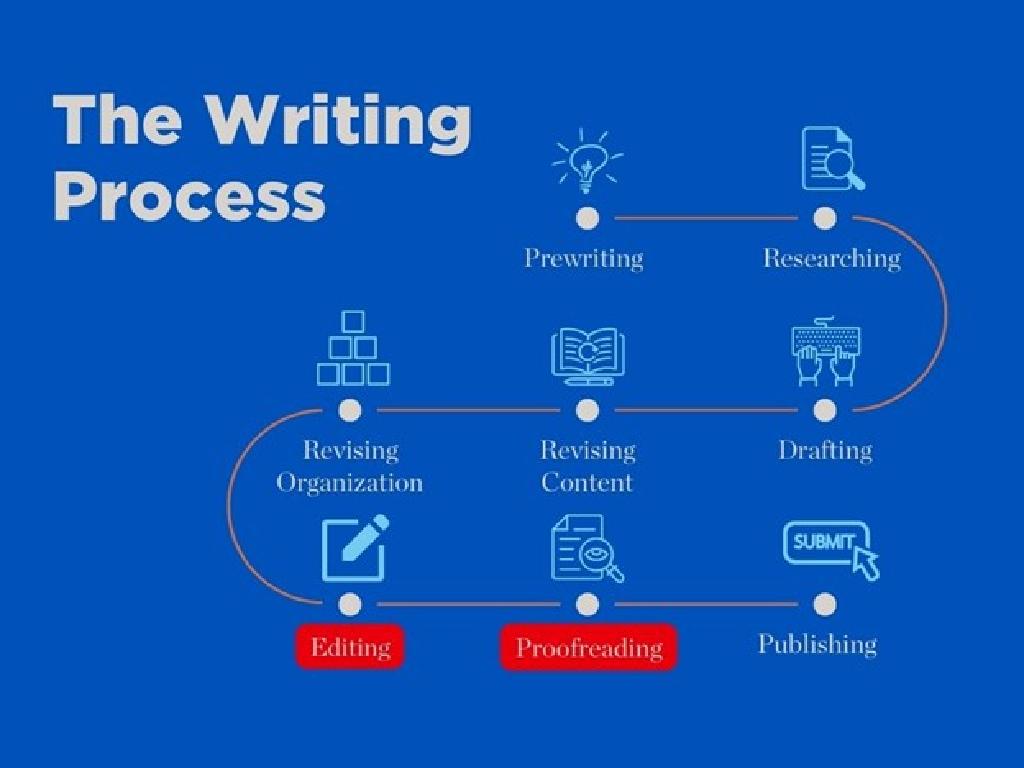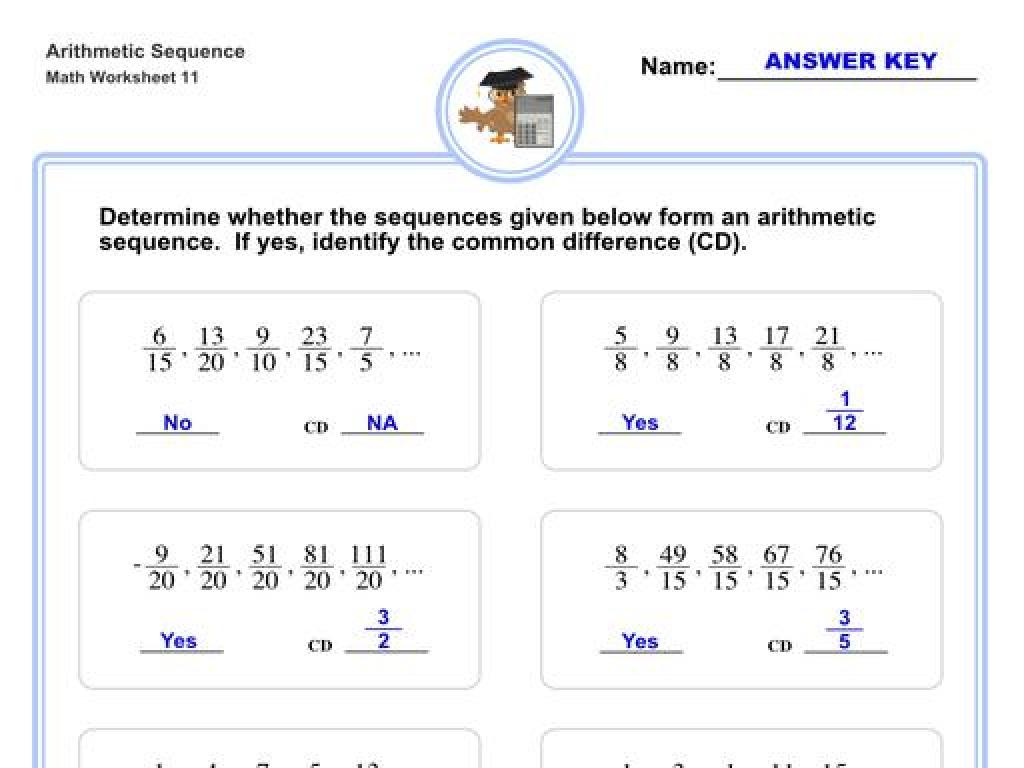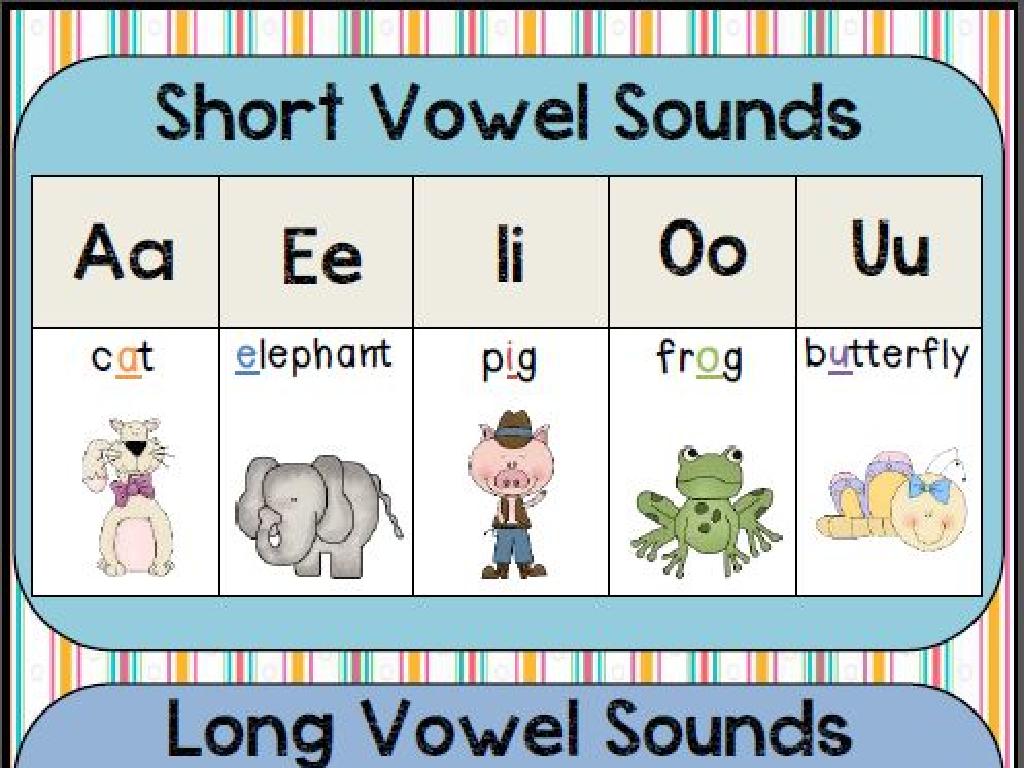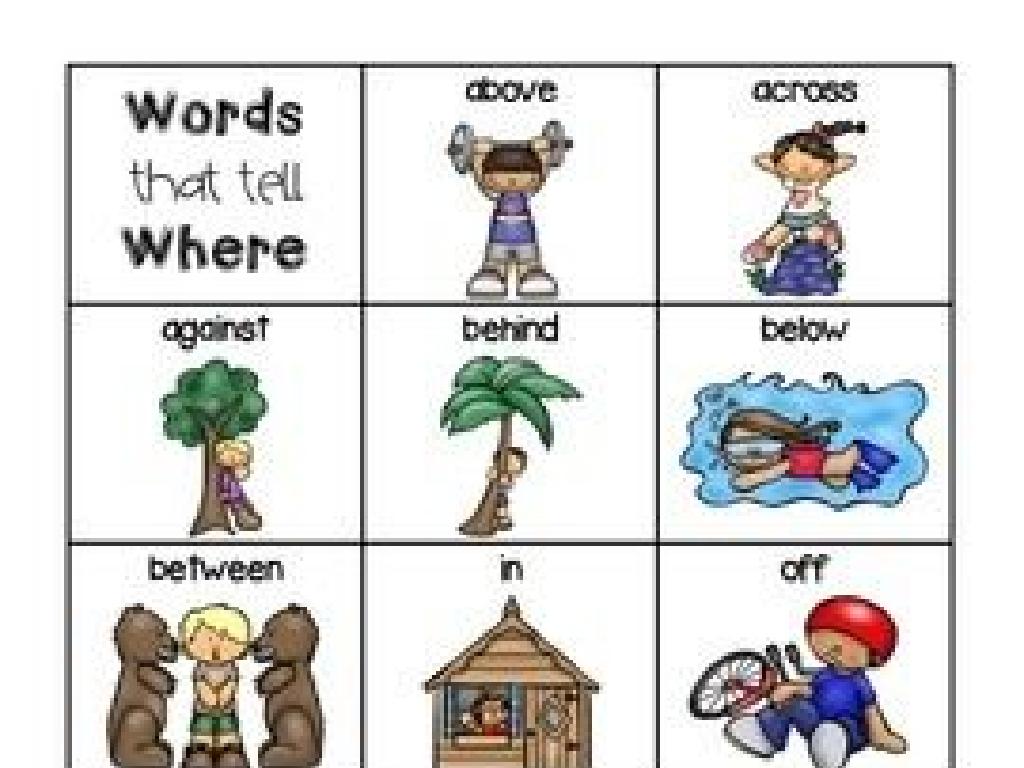Correct Errors In Everyday Use
Subject: Language arts
Grade: Seventh grade
Topic: Editing And Revising
Please LOG IN to download the presentation. Access is available to registered users only.
View More Content
Editing and Revising: Everyday Errors
– Importance of editing and revising
– Focus on common everyday errors
– Errors like ‘your’ vs. ‘you’re’ or ‘its’ vs. ‘it’s’
– Learn to spot and fix grammar mistakes
– Find subject-verb disagreements, incorrect tenses
– Master punctuation and spelling corrections
– Use of commas, periods, and correct spelling is crucial
|
This slide introduces the concept of editing and revising, emphasizing its importance in clear communication. Students will focus on identifying and correcting common errors that often occur in everyday writing. The objective is to equip students with the skills to recognize and amend grammatical mistakes, improper punctuation, and misspellings. Encourage students to think critically about the structure of sentences and the precise use of language. Provide examples of errors and their corrections to illustrate the points clearly. Activities can include peer-review sessions, where students exchange papers to spot errors, or creating a ‘wall of mistakes’ where common errors are displayed and corrected as a class.
Common Grammar Mistakes
– Subject-verb agreement errors
– ‘He run’ should be ‘He runs’ because the subject ‘He’ is singular.
– Maintaining tense consistency
– Avoid mixing tenses, like ‘She eats’ and then ‘She danced’ in one narrative.
– Pronoun-antecedent agreement
– Pronouns must match the nouns they replace, e.g., ‘Everyone’ is singular, so use ‘he or she’.
– Practice correcting sentences
|
This slide focuses on common grammar mistakes that students often make in their writing. Start by explaining subject-verb agreement and provide examples of correct and incorrect usage. Emphasize the importance of matching the verb to the subject in both number (singular/plural) and person (first/second/third). Next, discuss tense consistency, highlighting how shifting tenses can confuse the reader and disrupt the flow of writing. Then, move on to pronoun agreement, ensuring students understand that pronouns must agree with their antecedents in number, gender, and person. Finally, engage the class in an activity where they correct sentences with these common errors. This practical application will help solidify their understanding.
Punctuation Pitfalls: Mastering Marks
– Avoiding comma misuse
– Commas can separate ideas, but too many make a run-on sentence.
– Ending sentences with periods
– Periods signal the end of a thought; they keep sentences clear.
– Correct use of question marks
– Question marks are for inquiries; they shouldn’t be overused.
– When to use exclamation points
– Exclamation points show excitement or urgency; use them sparingly.
|
This slide focuses on common punctuation errors and how to avoid them. Emphasize the role of commas in preventing run-on sentences and how periods should be used to clearly end a statement. Discuss the appropriate use of question marks in framing inquiries and the impact of exclamation points to convey strong emotions or commands. Provide examples of each punctuation mark’s correct and incorrect usage, and encourage students to rewrite sentences that contain these errors. This will help them understand the importance of punctuation in writing clarity and reader comprehension.
Spelling Slip-ups: Avoiding Common Errors
– Understanding homophones
– ‘There’ is a place, ‘their’ shows possession, ‘they’re’ is ‘they are’.
– Tricks for commonly misspelled words
– Like ‘necessary’ (1 shirt, 2 sleeves) to remember the Cs and Ss.
– The limits of spell check
– Spell check might not catch ‘form’ instead of ‘from’.
– Proofreading practices
|
This slide focuses on common spelling mistakes and how to avoid them. Start by explaining homophones words that sound the same but have different meanings and spellings and give examples. Share memory tricks for difficult words, such as associating the word with an image or phrase. Discuss the limitations of spell check, emphasizing that it can’t catch errors with correctly spelled, but misused words. Encourage students to always proofread their work, even if they’ve used spell check, to catch these types of mistakes. Provide examples and exercises for students to practice.
Editing Strategies for Better Writing
– Read aloud to find mistakes
– Reading your text out loud can help you catch errors that you might miss when reading silently.
– Take a break before revising
– A short break can give you a new perspective on your work, making it easier to spot mistakes.
– Engage in peer review
– Exchange papers with a classmate to get a fresh set of eyes on your work.
– Learn feedback techniques
– Understand how to provide constructive criticism and how to use feedback to improve your writing.
|
This slide focuses on effective editing strategies to help students improve their writing skills. Encourage students to read their work aloud, as this can help them catch errors they might overlook when reading silently. Emphasize the importance of taking breaks during the writing process to revisit their work with a fresh perspective. Introduce the concept of peer review, explaining how students can learn from each other by giving and receiving feedback. Teach them how to provide constructive criticism that is helpful and specific, and how to use the feedback they receive to make their writing clearer and more engaging. Plan an activity where students can practice these strategies, such as a peer review session or editing worksheets.
Revising Techniques for Clear Writing
– Revising vs. Proofreading
– Revising improves content, proofreading checks grammar/spelling
– Organizing and Clarifying Ideas
– Use outlines, ensure each paragraph has a clear purpose
– Enhancing Word Choice
– Choose vivid, precise words over vague ones for effect
|
This slide aims to distinguish between revising and proofreading, emphasizing that revision involves refining the content for clarity and impact, while proofreading is the final check for surface errors. Teach students to organize their ideas using outlines and to check that each paragraph supports their main point. Encourage them to replace overused or vague words with more specific and impactful choices to enhance their writing. Provide examples of weak versus strong word choices and have students practice revising sentences for greater clarity and impact.
Class Activity: Editing Relay
– Break into small groups
– Distribute editing worksheets
– Identify and correct paragraph errors
– Find and fix mistakes in grammar, punctuation, and spelling
– Discuss corrections as a class
– Explain why changes were made, enhancing understanding
|
This interactive class activity is designed to engage students in collaborative learning while practicing their editing skills. Divide the class into small groups to foster teamwork. Provide each group with worksheets containing sample paragraphs with deliberate errors. Students will work together to identify and correct these errors, focusing on grammar, punctuation, and spelling. After the activity, each group will present their corrected paragraph to the class and discuss the rationale behind their changes. This will not only reinforce their editing skills but also encourage public speaking and critical thinking. Possible variations of the activity could include a timed challenge, swapping worksheets between groups for peer review, or using different paragraphs tailored to varying skill levels.
Wrapping Up: Editing Techniques
– Recap today’s editing lesson
– Homework: Write a short essay
– Choose any topic you like for your essay
– Apply editing strategies learned
– Use techniques from class to revise your draft
– Remember: Practice is key!
|
As we conclude today’s lesson on editing, remind students of the importance of revising their work to correct errors in everyday use. For homework, they should write a short essay on a topic of their choice, applying the editing techniques discussed in class. Emphasize that the goal is to practice these skills to become more proficient. Encourage them to review their work for common errors such as spelling, grammar, and punctuation. In the next class, we can review some of the essays together, highlighting the successful application of editing strategies and discussing areas for improvement.

